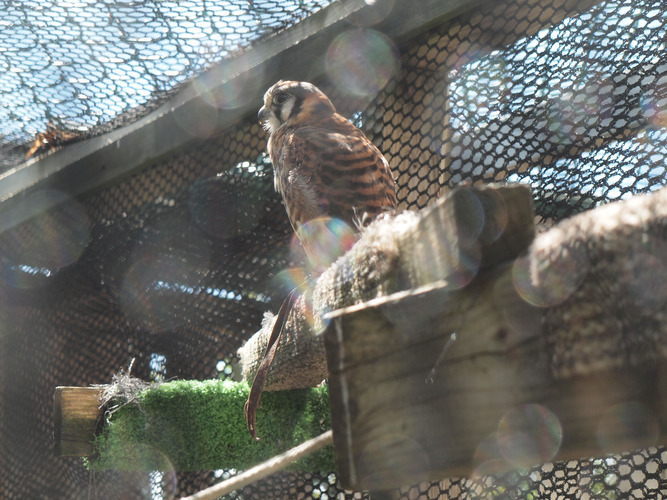MARLBORO — While the Southern Vermont Natural History Museum on Hogback Mountain has closed, the organization remains open as a nonprofit, providing its signature nature-based education programs and hosting periodic classes, camps, and events at its Mountainside location at 117 Adams Cross Rd.
Museum Managing Director Michael Clough explains that building conditions precipitated the decision to make the move a bit sooner than anticipated, although it has long been the plan.
"A lot of the problems with the building have been ongoing for the last few years," he says, noting a critical event was abundant summer rain that caused "quite a blossom of mold."
"Our plan was doing exactly what we're doing but, unfortunately, we've had to do it a little faster," Clough says.
The museum was founded in Wilmington in 1997, but its taxidermy had been at the scenic Hogback overlook since the late 1960s as the Luman Ranger Nelson Natural History Collection. It houses one of the largest collections of native bird and mammal mounts in the Northeast and incorporates interactive and live animal exhibits, including birds of prey, reptiles and amphibians, native trout and salmon, and exotic insects and spiders.
The museum's natural history collection is primarily the work of Nelson, a noted naturalist and taxidermist of the early 1900s. The collection includes about 250 species of bird and mammal found in the Northeastern United States, and more than 600 individual mounts.
The museum sees close to 7,000 visitors annually, and its outreach programs reach thousands more throughout the region.
The project to temporarily store one of the largest taxidermy collections of native species in Vermont and set up for live educational animals to be housed at the new site while continuing to host programming off-site around the region is a daunting one.
"We're still in transition, so the new site isn't open yet," Clough says. "We are in the process of moving our offices, staff, animals, and volunteer program to Adams Crossroad, where Mountainside is located."
Mountainside, the property the Museum acquired by donation about two years ago, includes 7 acres of land and trails, a 1,600-square-foot building, and a new outdoor pavilion. It is the site of the former Pool Learning Center.
What will be missing for now at the new site, says Clough, is the taxidermy exhibit.
"We will relocate all the live program animals there, though. Trying to get the huge snapping turtle tank into the building is currently a point of discussion," he says with a laugh.
Clough says the new location will ultimately be set up much better for programming, which is the only thing that is expected to happen on site and be open to the public - for now.
Most of the taxidermy will be stored in a climate- and humidity-controlled facility, with some on loan and some exhibited.
While the museum rented the Wilmington site, it owns the Marlboro site, and although the current building on the premises there is small, Clough says it "will serve us great for now."
Ownership also allows the group to raise money for improvements.
Fundraising for the today, and tomorrow
The museum has set up a GoFundMe page with the goal of raising $8,000 to finish building animal enclosures and fully relocate personnel and animals soonest. To date, almost $2,600 has been raised.
"Once we have ourselves settled in, we'll start working on the capital campaign to build the bigger, stronger, better, natural history museum," Clough says, emphasizing that Museum officials are seeking public input about what this would look like and where it might be.
"This - a year, probably, down the road - will be focused on building a museum to house the collection and really be a Vermont museum of natural history," he says. "The plan is to build something more modern that will have better access."
The museum is funded primarily through grants, private donations, and program revenue. Clough notes the Museum does not currently have an endowment and says one of the reasons for hiring new Executive Director Katherine Wheeler was "her experience in fundraising and building the sort of financial infrastructure that the museum needs to move forward."
Despite the logistics of protecting living animals and a priceless collection while on the move, Clough says this is "definitely an exciting time" for the museum.
"Even though there is still lots more to do, we have seen a great upwelling of community support for this move," he says, noting help from a number of local businesses and both the Brattleboro Area and Deerfield Valley chambers of commerce.
Learn more about upcoming programs at vermontmuseum.org or call 802-380-8919.
This News item by Virginia Ray was written for The Commons.
